An Overview of the Origins and History 1888 to1992
During the early to mid-1970s I was privileged to work as a member of the physiotherapy staff at Guy’s Hospital London. Guy’s was founded in 1726 and is recognised as one of the great and famous hospitals in the United Kingdom (UK). It was also one of the first and most influential hospitals to create a School of Physiotherapy. The title of the School changed a number of times over the years reflecting the wide-ranging development in education, clinical practice, administration and much else. It was also changed in line with the developmental process of the profession maturing through the landmarks of the Society of Trained Masseuses (1895), its Incorporation by the Board of Trade to the Incorporated Society of Trained Masseuses (1910), the granting of its Royal Charter in 1920 to the Chartered Society of Massage and Medical Gymnastics and in 1944 to the Chartered Society of Physiotherapy.
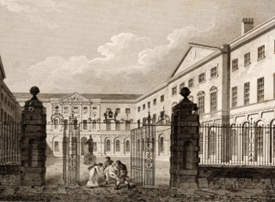
Guy’s Hospital Front Gates
This article sets out a brief overview of the origin, development and history of Guy’s School of Physiotherapy from the teaching of massage at Guy’s which started in 1888 through to the closure of the School in 1992 when it transferred to the Eastbourne Campus of the then Brighton Polytechnic (later to become University of Brighton). In 1992, when Guy’s School moved to Brighton Polytechnic it was amalgamated with St. Thomas’s Hospital School of Physiotherapy to become a new physiotherapy school which, when the Polytechnic was given university status, became known as the University of Brighton School of Physiotherapy.
Coincidentally, early in 1984, having held a variety of senior physiotherapy clinical and leadership posts in several other physiotherapy services around the UK I moved to East Sussex to take up the role of District Physiotherapy Manager and Lead for Eastbourne District Health Authority. The Eastbourne district was then a large geographical mixed urban and rural area of 1,400 square miles and I had responsibility for all National Health Service physiotherapy specialties in the District. Not long after taking up this role I was also given responsibility by Eastbourne District Health Authority to be their managerial and clinical lead representing the Health Authority to link with the South East Thames Regional Health Authority and Brighton Polytechnic also liaising with the Council for Professions Supplementary to Medicine and the Chartered Society of Physiotherapy to secure the move of Guy’s Hospital School of Physiotherapy to the Eastbourne campus of the then Brighton Polytechnic
The most detailed and authoritative account of the history and development of Guy’s School of Physiotherapy is set out in this article (below); its author was RJ Cooper (Ron Cooper), Principal of Guy’s Hospital School of Physiotherapy from 1968 to the late 1980s, when he retired. Ron’s comprehensive account, which he gave to me when we were in discussion about the move of the School to Brighton Polytechnic, was first published in the Guy’s Hospital Gazette at the time of the 250th year anniversary of the founding of the hospital celebration in 1976. Consequently, the main content of this article covers the period 1888 to 1976. Ron’s account is supplemented by research findings of my own from the London Metropolitan Collection, the Wellcome Foundation and my own research about Shepherd’s House where the School of Physiotherapy was based from the early 1920s to 1992 when the School moved to Eastbourne Campus on the south coast of England.
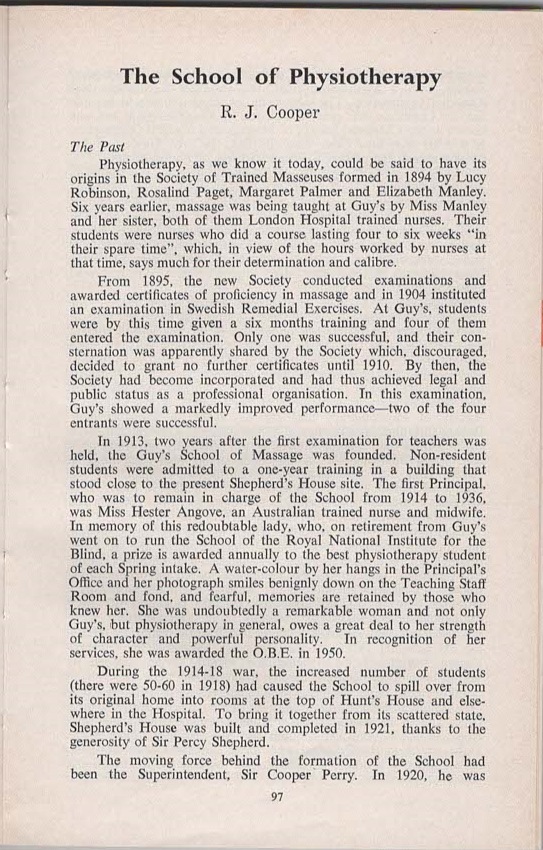
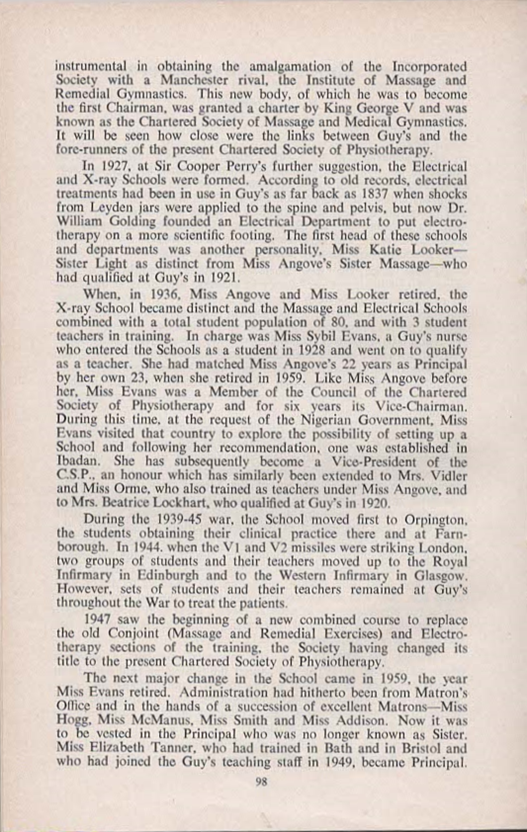
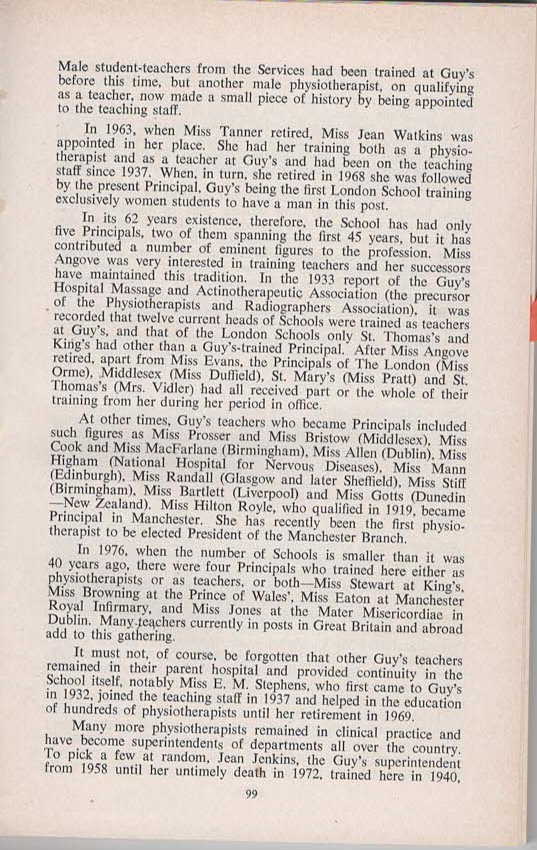

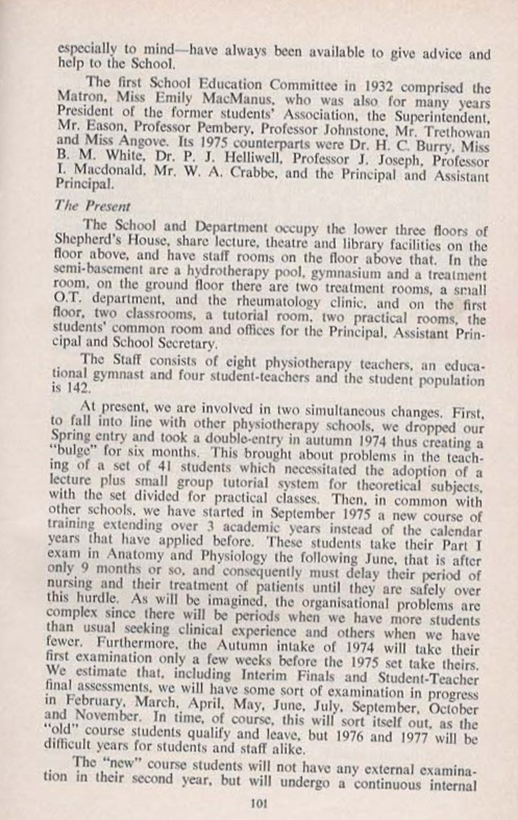

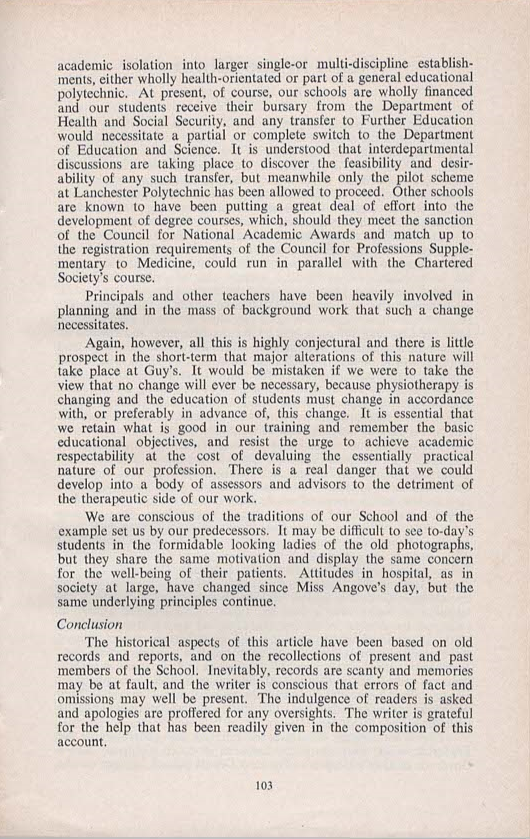
Shepherd’s House – Development of the New School.
From the late 1890s the steady development of education and practice in a range of early techniques and skills was rapidly taking place at Guy’s Hospital, for example:
In 1907, Sister Mudge was sent at the expense of the Hospital to study the Swedish methods of gymnastics for use at Guy’s.
In 1910, the Medical Committee urged that a “comprehensive scheme should be formulated for the establishment of a School for Physical Culture, the pupils of which might obtain ample clinical experience in Medical and Surgical work through the opportunities afforded at Guy’s Hospital”. In 1913, Mr. Trethowan, orthopaedic surgeon, prepared a memorandum setting out such a scheme and the Guy’s School of Massage was formally founded.
In 1914, the first Head of the School, Hester Angove, was appointed remaining in post until 1936, at which point she moved on to teach at the National Institute for the Blind School (NIB) in Great Portland Street, London which had already been in operation for around 20 years.
In July 1914 application for the first pupils were invited.
In 1911 the first examinations took place at Guy’s for teachers of massage.
In 1917 a meeting was held to discuss the formation of an Association “to unite all massage students trained, in training and to be trained at Guy’s hospital”, the first meeting took place on 16th November 1918. The Association celebrated its centenary in 2017.
In 1888 -1893, Sir Edwin Cooper Perry was made Dean of the Guy’s Hospital Medical School and in 1893 he became Superintendent of the Hospital. He had tirelessly supported developments in massage and remedial exercise, and it is also interesting to note that he became Chairman of the Chartered Society of Massage and Remedial Gymnastics on the granting of the Royal Charter in 1920.
Accommodation and Building of Shepherd’s House
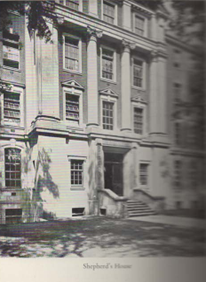
Shepherds House
In 1917 during World War One, the House Committee of Guy’s Hospital had submitted to King Edward’s Hospital Fund for London a scheme for the enlargement of the Henriette Raphael nurses’ home and for the provision in the same building of an up-to-date department for massage, remedial exercises and electrical and light treatment. The building, begun in 1920, involved the demolition of the old clinical house which had once been the “Lunatic House”, a building rich in memories and old associations, the loss of which was sincerely deplored. In its place rose the great block called the William Shepherd House, to commemorate one who bequeathed the income from a capital sum of £35,000 to discharge the debt in its erection. However, as a result of World War One its cost escalated sharply; on what was expected to cost £30,000, £94,891 was spent. The School at first was accommodated in a temporary structure adjoining the old Clinical Ward and in some rooms in the attics of Hunt’s House. Shepherd’s House was completed in 1921 and was opened on the 15th July of that year by His Royal Highness the Duke of York. The two upper floors of the building, which communicated with the Nurse’s Home provided accommodation for classrooms, a library and bedrooms for the Preliminary Training Rooms as well as sixty additional bedrooms for the nursing staff. The two lower floors housed the Departments of Radiotherapy and Massage and Remedial Exercises.
References
Buchele. Guy’s Hospital Physiotherapy Association 1917- 2017.
Cameron MD. (1954). Mr Guy’s Hospital 1726-1948. Longmans Publishing. 1954
Cooper RJ. (1976). A History of the School of Physiotherapy, Guys Hospital.
Guys Hospital, 250 Years: The Physiotherapy School. (1976). Guys Hospital Gazette.
Papers also researched at Wellcome Foundation London and London Metropolitan Archives.

